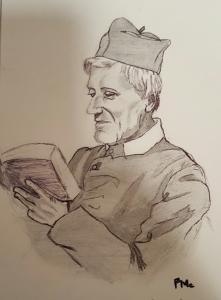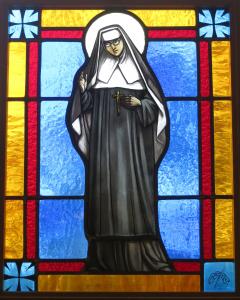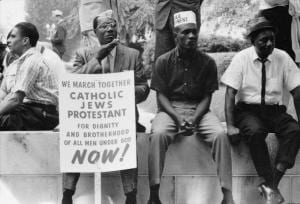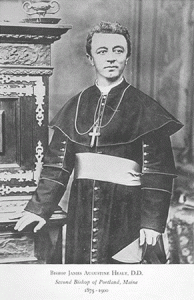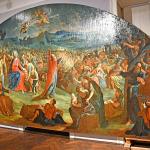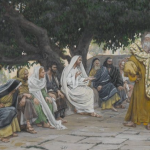Father Pierre-Jean De Smet, (30 January 1801 – 23 May 1873), also known as Pierre DeSmet and Peter DeSmet, a Roman Catholic priest and member of the Society of Jesus, was a Belgian, active in missionary work among the Native Americans of the Western United States in the mid-1800s. Was known as “Friend of Sitting Bull”.
De Smet was born in Dendermonde, Belgium. He first came to America in 1821 to begin his novitiate at White Marsh, a Jesuit estate near Baltimore, Maryland (part of which exists today as Sacred Heart Church in Bowie). Later he moved to Florissant, Missouri, where he was ordained on Sept. 23, 1827. From 1824-1830, he learned about Indian customs and other useful information as a prefect at St. Regis Seminary. From 1833-1837, he was in Belgium due to health problems.
In 1838-1839, De Smet helped establish St. Joseph’s Mission in what is now Council Bluffs, Iowa. Taking over the abandoned Council Bluffs Blockhouse military fort, De Smet worked primarily with a Potawatomi band led by the famed chief Sauganash. De Smet was appalled by the murder and brutality caused by the whiskey trade; he had little success in religious conversions, resorting to secret baptisms of Indian children. During this time he assisted and supported Joseph Nicollet’s efforts at mapping the Upper Midwest. De Smet used newly-acquired mapping skills to produce the first detailed map of the Missouri River valley system, from below the Platte River to the Big Sioux River; this map shows the locations of Indian villages and other cultural features.
His travels west allowed him to spend a large period of his life exploring and organizing missions. He was involved in extensive missionary work, especially among the Flatheads. He was sent by Bishop Joseph Rosati after several pleas from the Nez Perce and Flathead Indians to receive a ‘Blackrobe’ (the name by which the Catholic missionnaries were known, as they were wearing the traditional long black cassock).
One of DeSmet’s longest explorations began in August 1845. He started from Lake Pend Oreille, Idaho and crossed country into the Kootenay River valley. From there he followed the valley, eventually crossing over to the source of the Columbia River. He then traversed a portion of that valley, followed Sinclair Pass, recrossed the Kootenay and using White Man’s Pass reached the Bow River valley. He would have been near the site of present-day Canmore, Alberta. From there he headed north to Rocky Mountain House. By this time it was October and he fulfilled one of his goals; to meet with the Crees, Chippewas, and Blackfeet of the area. At the end of the month, De Smet traveled to the east to search for more Natives. He was fortunate to find his way back to Rocky Mountain House and was guided from there to Fort Edmonton where he spent the winter of 1845-1846.
The spring saw DeSmet’s return trip carrying him to Jasper House and, with terrible suffering, reaching the Columbia River and Fort Vancouver. He returned to his mission at Sainte-Marie on the Bitterroot River and then returned to St. Louis. His time as a missionary in the Rockies was over.
In his remaining years, he was active in work regarding the missions he helped establish and fund. In 1868 he persuaded Sitting Bull to accept the subsequent Treaty of Fort Laramie.
He died in St. Louis, Missouri and was originally buried at St. Stanislaus Seminary with some fellow early Jesuit explorers nearby Florissant. In 2003, after some controversy, his body and those of the other Jesuits were moved to Calvary Cemetery (the burial site for many Missouri Province Jesuits) (see Bellefontaine and Calvary Cemeteries) near St. Louis.
He died in St. Louis, Missouri and was originally buried at St. Stanislaus Seminary with some fellow early Jesuit explorers nearby Florissant. In 2003, after some controversy, his body and those of the other Jesuits were moved to Calvary Cemetery (the burial site for many Missouri Province Jesuits) (see Bellefontaine and Calvary Cemeteries) near St. Louis.
DeSmet, Idaho, DeSmet, Montana (an unincorporated place near the Missoula International Airport), De Smet, South Dakota, and De Smet Lake outside of Sheridan, Wyoming are named in honor of him, as is De Smet Jesuit High School in Creve Coeur, Missouri and DeSmet Hall at Gonzaga University.
(From Wikipedia)



